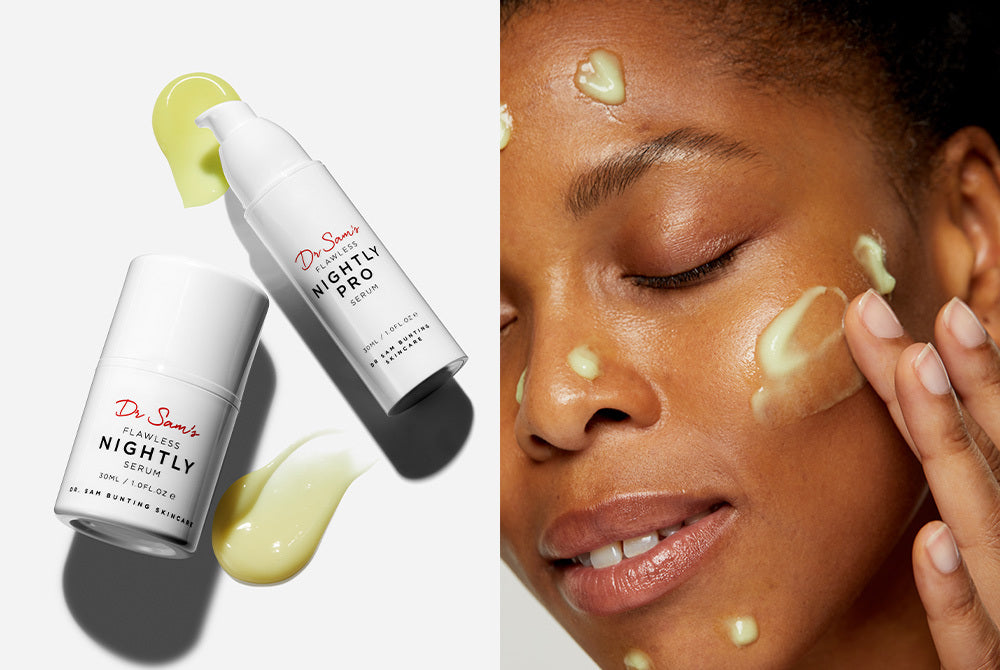Views: 0
With over half a billion results on the hashtag retinoid on TikTok, there’s a wealth of information floating around in the ether – but how much is actually correct?
I talk to a lot of people in the beauty industry and I have no doubt that many of these retinoid…let’s call them rumours…. are the reason that people are skipping them and losing out on the incredible results they can deliver. So let’s look at the top 6 myths that might be holding you back.
Myth #1 – Retinoids thin the skin
In reality: this one is simply not true.
They thicken both the epidermis and dermis, hence their anti-ageing superpowers. The stratum corneum which is essentially our skin barrier and sits at the top of the epidermis does become thinner but it also becomes more flexible and smooth, hence the textural benefits we see with retinoid use.
Myth #2 – Retinoids can’t be used on sensitive skin
In reality: not necessarily.
I think that success with retinoids is all about starting the right one in the right place with the right routine. Choose a gentle retinoid like Granactive Retinoid, strip out all other actives and use a supportive moisturiser with niacinamide, which helps bolster barrier function. Apply no more than a pea sized amount of your retinoid and try the 13 Dot Technique for accurate application. Use it every 3rd night at the beginning and build frequency slowly. And remember to use sunscreen diligently in the daytime.

Myth #3 – All retinoids are the same
In reality: not true.
I think this is, in part, to do with the language around this gold standard group of ingredients.
Retinoid is the collective noun for the family of ingredients related to vitamin A. The most recognised member of the family is probably retinol. But when you hear people talk about retinoids…..that’s confusing because there is no such thing – retinol is retinol; there aren’t any varieties of retinol. But there are varieties of retinoids. Make sense?
Retinoids work on a number of different aspects of skin function – some work preferentially on the pore to help solve acne. This helps limit their ability to cause irritation. A good example of this is adapalene – it’s a synthetic retinoid so has been developed specifically to have this action on the skin.
Others, like retinol and retinaldehyde ultimately get converted into all trans retinoic acid, which is the active molecule in the skin – these forms of retinoids occur naturally in our skin, so in a way we’re hacking into the skin’s own natural regeneration processes. Hence they all have very similar, broad properties, targeting the signs of ageing as well as breakouts. The main difference is potency – retinol requires 2 enzyme conversion steps to become active, whereas retinaldehyde requires only one, rendering it more potent.
Granactive Retinoid is of interest because it is a synthetic retinoid related to all trans retinoic acid that is active without needing to be converted – this is the reason I incorporated it into our cult retinoid Flawless Nightly Pro 5% Retinoid Serum.

Myth #4 – Retinoids can’t be used in the summer
In reality – not true.
With good sun behaviour, including broad spectrum SPF 50, using sun-protective clothing and seeking shade, continued use of retinoids throughout summer is perfectly safe. This myth probably originates from the fact that retinoids shouldn’t be used in the morning because most get broken down by UV rays and become useless.
Myth #5 – Retinoids exfoliate the skin
In reality – sort of.
Retinoids definitely lead to smoother skin – but it’s by a different mechanism to classic exfoliation. Whereas scrubs and alpha hydroxy acids work by disrupting the bonds between skin cells to remove the top layer of our skin to reveal smoother, brighter cells underneath, retinoids work at the level of our genes. It’s much more sophisticated – they change the way skin cells differentiate, meaning cell turnover is increased and the outcome of smooth, bright skin is achieved.
Myth #6 – Retinoids can’t be used on the eye contour area
In reality – they absolutely can be used on the eye area.
In fact they’re probably the most important ingredient we have for the eye area (after sunscreen!) as they stimulate collagen, which thickens the dermis and makes skin resistant to creasing, reducing the appearance of crows feet and dark circles. Again, it’s the importance of going in at the right strength with the right application. Flawless Nightly Eye Serum contains 2% Granactive Retinoid in a really moisturising base to ensure maximum tolerability – I recommend using no more than a smear (technical term!) on the orbital bone you can feel surrounding the socket.

It’s a reassuring list – but have I missed a myth that’s on your mind? Send me a DM if so – let’s only share high quality information about our favourite and most impactful ingredients.

